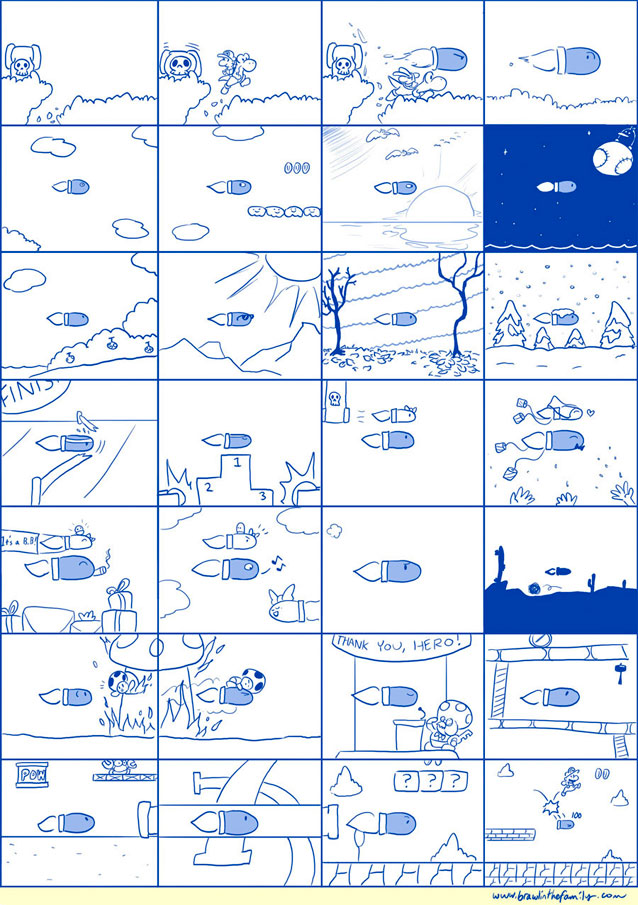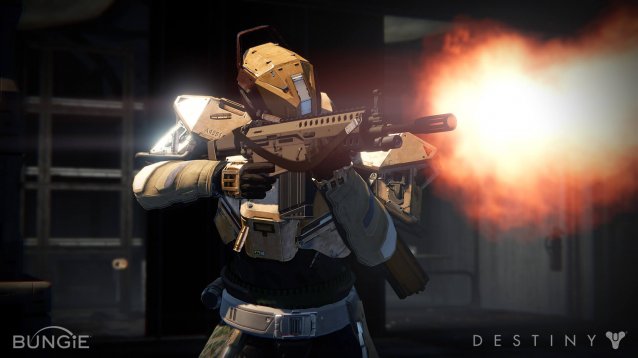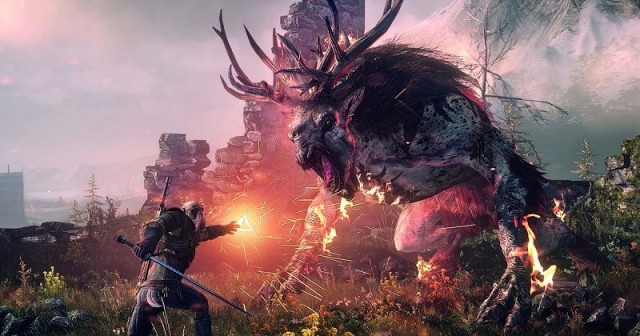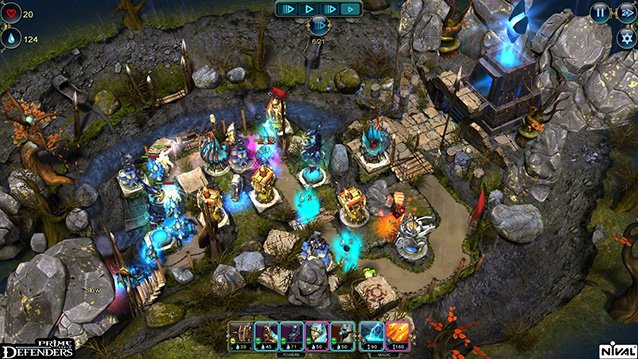

Game Rant’s Andrew Dyce reviews AMY
It’s hard to think of a genre with a more rabid following than that of survival-horror. With titan franchises like Resident Evil and Silent Hill to contend with, one downloadable title looks to bring new ideas and game mechanics into the more-than-popular practice of zombie-killing. Developer VectorCell may not have the name recognition as some of their competitors, but from the first look at AMY it’s been clear that they were intent on doing things differently.
Since the game’s release on Xbox Live Arcade and PSN earlier this month, the title has received more than a little harsh criticism from both fans and critics. But do the game’s flaws overpower its originality, or are the more inspired mechanics and challenging puzzles something fans of the genre will be able to enjoy?
That question is one not easily answered, and the game’s overall experience is anything but a steady one. For those unfamiliar with the premise of AMY, the story is largely one that zombie and horror game fans will be all too familiar with. The player steps into the role of Lana, a woman tasked with escorting a mysterious, young, autistic girl named Amy from a bizarre facility to undergo testing in a nearby hospital.
Soon the pair find themselves in the midst of a zombie outbreak, forced to hide from shadowy government soldiers intent on keeping the infection contained to the city limits. Lana must evade the military, stave off infection and deal out some zombie brutality, all while protecting Amy and attempting to uncover the mystery surrounding her mental condition and unique abilities.
That is about as much story as the game ever attempts to tell, and quickly takes a backseat to the mechanics themselves. It is somewhat of a misnomer to describe AMY as a complete survival-horror game, since Lana and Amy are both ill equipped to deal with the dangers of a zombie outbreak. Weapons are limited to clubs and crowbars, and are too brittle to last more than a dozen strikes – meaning players are better off avoiding any skirmishes at all. The result is that combat, too, takes second priority to the main component of the games: stealth and traversal.
Whether it’s ledges that need to be shimmied along, or elevators that need to be systematically lowered and raised, Lana is responsible for helping both she and Amy evade and escape. While the player has full control of Lana, the same cannot be said for Amy (aside from her psychic attacks). The young, mute girl may be able to take directions from her escort to some extent (crawl through a vent, press a button when I tell you, etc.) but more often than not, the player will need to both figuratively and literally hold Amy’s hand throughout.
While the various puzzles are being solved, the overarching threat to Lana is of the infection itself, slowly turning her into one of the zombie forms and draining her life. The only way to survive is to remain close to Amy – who mysteriously is immune to the disease – and inject antidotes intermittently when forced to travel alone. While all of these mechanics show incredible promise and some inspired thinking, the myriad ways in which the execution falls short is the lasting impression AMY gives.
The main problem is that all of these mechanics and challenges will succeed only if the player acts in the exact way the developers expect them to. We’re not just talking about screwing up a puzzle on the first step and not realizing it until much later – there is that as well – but the constant ways the narrative and experience slides horribly off the rails. Again, the problem is not the challenges that the developers have set for players being too difficult (as they have since claimed as the cause of most criticism) but that overwhelming frustration is permanently present on the very edges of gameplay.
Possessing both the ability to give life and attract zombie attention, the system in place to call Amy to Lana’s side must be sound to work properly. Yet the player is likely to find themselves staring across a small space at the girl, pressing the call button, with absolutely no reaction whatsoever. Similarly, chase scenes that require Amy to remain hand-in-hand with Lana are completely failed if the young girl comes into contact with a microscopic wall, obstacle or even corner taken too sharply.
The game is also divided into six chapters with three checkpoints within, so a slip-up, however minor, may result in up to 15 minutes of gameplay having to be repeated. Oh, and don’t turn the game off halfway through a chapter or else you’ll lose any progress from its starting point. Exactly why the developers thought this would add challenge and not plain and simple irritation is beyond us, especially when based around gameplay that is entirely trial and error.
In a similar vein, any game that makes combat a task far too demanding for players to rely on as a main tactic needs to shape the gameplay around that fact. Overpowered enemies are an effective way of forcing players to resort to stealth and strategy, but the responsibility then lies with the developers to reward those who catch on fast. Infinitely-spawning enemies is a mechanic as close to blasphemy as infinite ammo in modern gaming, and using it in the context of a game like AMY is a poor choice at best, and outright griefing at its worst.
Again, all of these challenges, frustrations and punishing factors would be tolerable if the overall experience was worth it. But with a non-existent story and generally straightforward puzzles, AMY‘s greatest crime is simply being unsatisfying. The question that players will most often ask themselves is not “where do I go next?” but instead, “why am I actually playing this?” The only real compelling and well-executed aspect of the game is the environment itself, which may be enough to make the campaign worthwhile for serious fans of survival-horror.
While AMY has attracted criticism for its very existence, the game itself isn’t a complete failure. The puzzles are not broken or too obtuse, and the mechanics surrounding Amy and Lana do work for the most part. The environments are attractive and compelling, and the contextual indicators of infection are well-realized. But ambition alone can’t lead to success, and it’s hard to think of one aspect of gameplay that is executed beautifully. Since the act of solving the puzzle by remaining in the unnecessarily-small window in which the game’s system works properly is the only entertainment offered by AMY, most gamers won’t find it a worthwhile experience.
But for the most die-hard fans of survival-horror atmosphere and design, AMY just might be a bite-sized experience that is worth the price of admission. For those who prefer their game experiences to be satisfying, stimulating, polished and not eager to get in the way of player enjoyment, it’s probably best to steer clear.
AMY can be downloaded for 800 MS Points on Xbox Live, and for $10 on the PlayStation Network. Game Rant played the Xbox 360 version for this review.




 How To Import Other People's Save Games On Your PS3
How To Import Other People's Save Games On Your PS3 Boss Fight: Wraith from the Painting - The Witcher 3 DLC Hearts of Stone Guide
Boss Fight: Wraith from the Painting - The Witcher 3 DLC Hearts of Stone Guide Prime World: Defenders Review
Prime World: Defenders Review Transformers Devastation How to unlock Wheeljack and Grimlock
Transformers Devastation How to unlock Wheeljack and Grimlock The Last of Us: Remastered Complete Walkthrough and Details
The Last of Us: Remastered Complete Walkthrough and Details